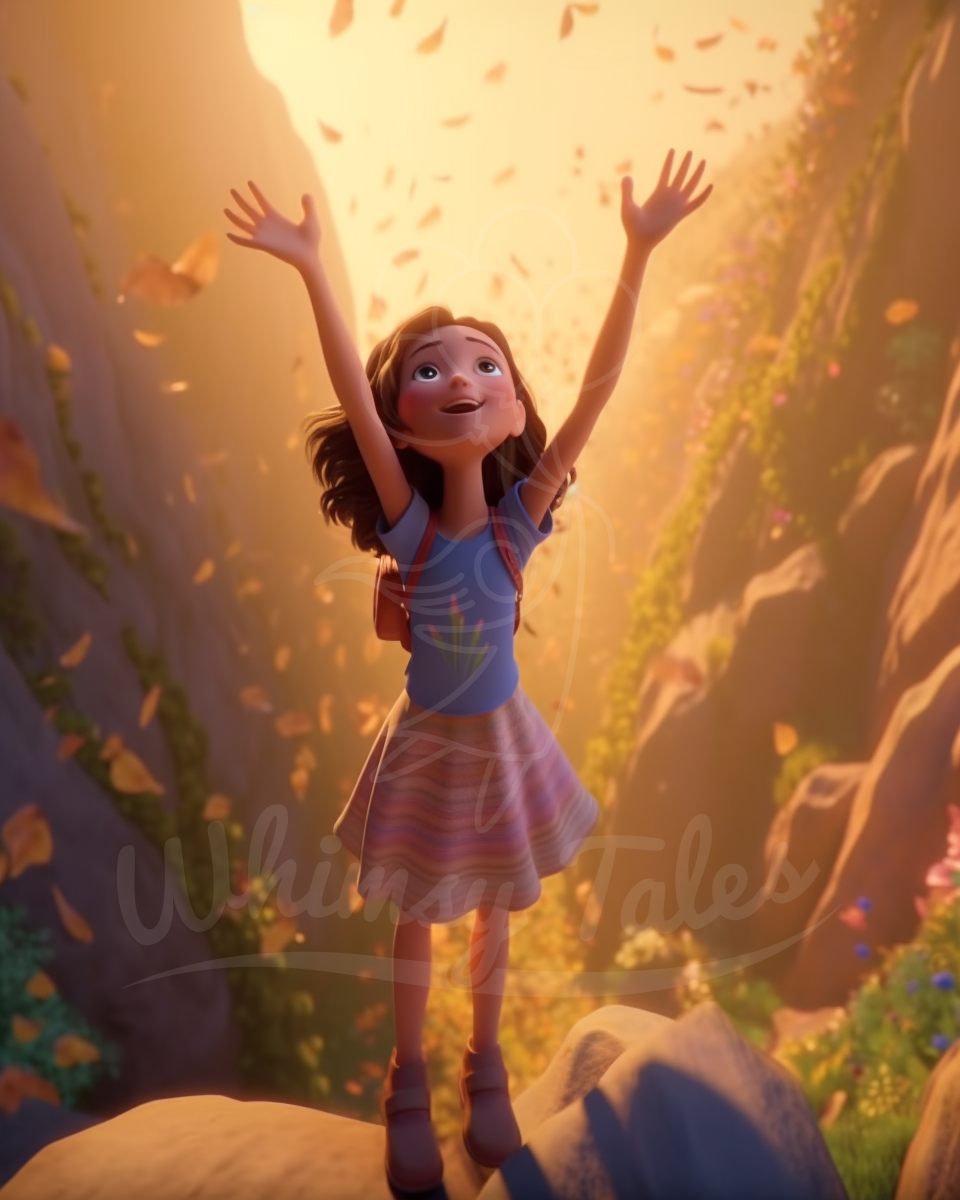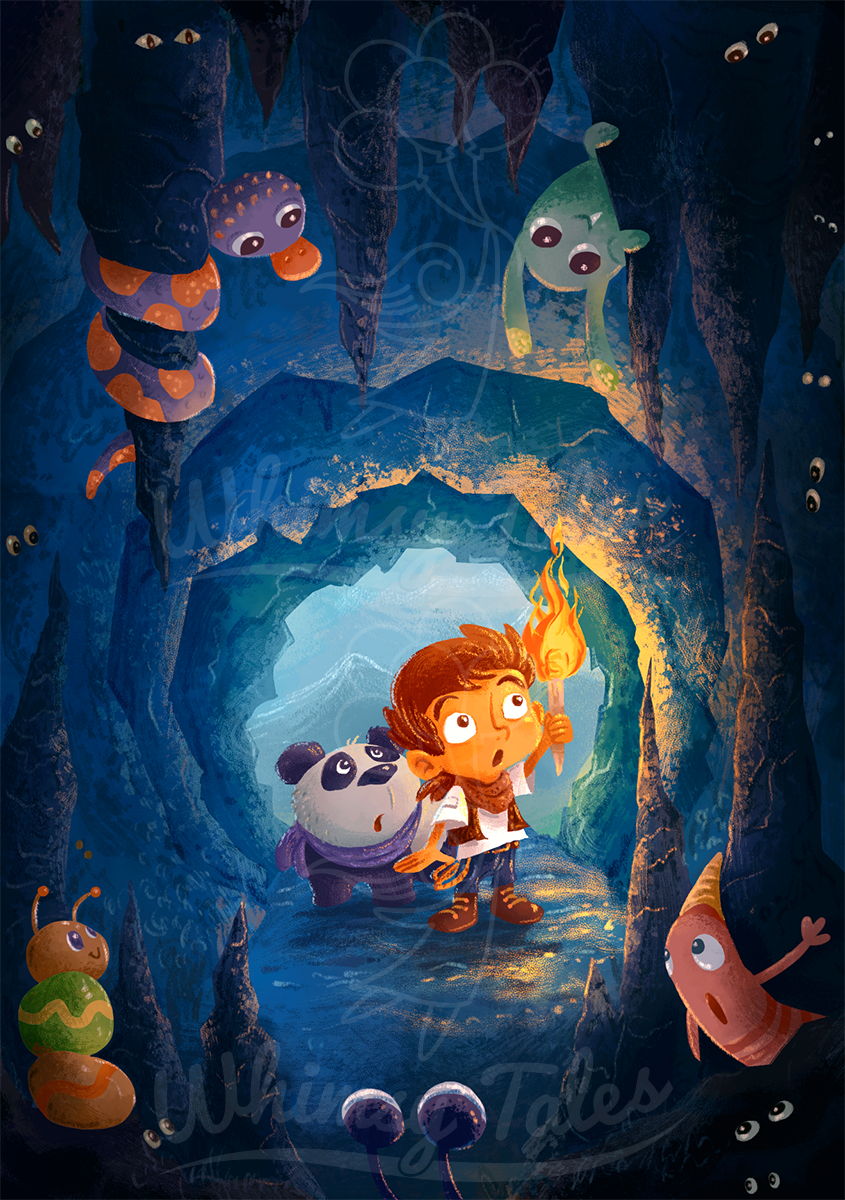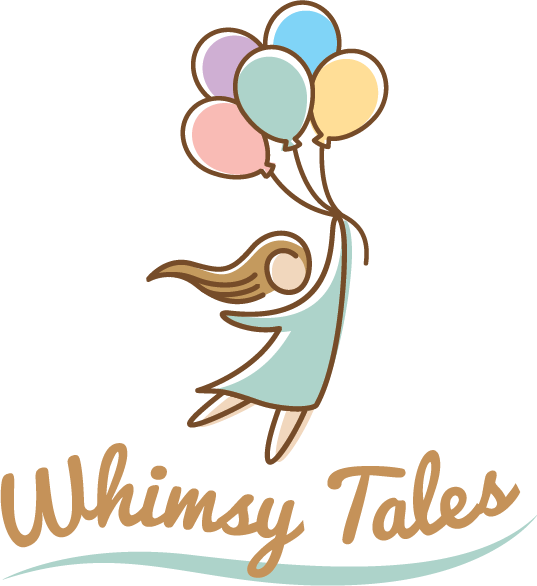
The Enchanting World of Whimsical Art in Storytelling
Share
Oprah Winfrey once said, "You become what you believe." As a professional illustrator and a father of 2, I have seen firsthand how the magical world of storytelling can influence a child's well-being, shaping their beliefs about themselves and the world. Storytelling is a powerful tool that can reduce anxiety and stress, increase empathy, and boost self-esteem in children. One element that elevates the storytelling experience is the use of whimsical art—a style that I am deeply passionate about. In this article, I will explore the enchanting realm of whimsical art in storytelling and its profound effects on children's mental health.

Whimsical, imaginative worlds of a child’s mind are amazing!
The Art of Storytelling and Its Positive Influence on Children's Mental Health
Storytelling is the act of conveying a narrative through spoken or written words, images, or other forms of communication. It has been an integral part of human culture for centuries, serving as a means of entertainment, education, and communication. Recently, researchers have uncovered the positive impact that storytelling can have on children's mental health.
Storytelling can help children develop language skills, improve communication, increase empathy, and promote emotional regulation. It can also be used as a therapeutic tool to help children process difficult emotions and experiences. By engaging in storytelling, children can learn to express themselves in a safe and supportive environment.
One striking example of storytelling's therapeutic benefits can be found in the work of Dr. Melissa Brymer, a psychologist and the director of terrorism and disaster programs at the UCLA-Duke National Center for Child Traumatic Stress. Dr. Brymer emphasizes the importance of using storytelling to help children who have experienced trauma, as it provides a way for them to express and understand their feelings (Brymer, 2019).
Whimsical Art: A World of Imagination and Its Characteristics
Whimsical art is a style of art characterized by its playful, juvenile, imaginative, and fantastical elements. It often incorporates bright colors, exaggerated shapes, and surreal imagery. Whimsical art can be found in various forms, including painting, drawing, and illustration.
A bit of shameless plug: If you're looking to bring a touch of whimsy into your life, why not explore our collection of printable wall art, coloring books, and downloadable prints featuring charming illustrations and kawaii character art at store? Discover the perfect piece to inspire your own imaginative journey or to brighten up a loved one's day.
Whimsical art is often associated with childhood and can evoke feelings of wonder and joy. It can transport children to imaginary worlds and spark their imaginations. Whimsical art can also be used by adults to convey complex emotions and ideas in a way that is accessible and engaging for children.
The Power of Whimsical Art in Storytelling and Its Positive Effects on Young Minds
Whimsical art can enhance the storytelling experience by adding a visual element to the narrative. It can help children visualize the characters and settings of the story, making it easier for them to engage with the narrative. Whimsical art can also help children connect with the emotions and themes of the story by creating a sense of whimsy and wonder.
This is why cartoons, comic books, dolls and action figures are popular among young children. They're often fun, colorful, and full of unique characters that can help children connect with different stories that they are familiar with. By combining whimsical art with storytelling, young children can gain a better understanding of the characters and themes within the story, while also developing their language and communication skills.
Research has shown that exposure to whimsical art can have a positive effect on children's mental health. It can reduce stress and anxiety, increase creativity and imagination, and improve overall well-being. A study published in the Journal of Clinical Child and Adolescent Psychology found that art therapy had a significant positive effect on children's self-esteem and coping abilities (Golberstein, et al., 2006). By incorporating whimsical art into storytelling, we can create a sense of safety and a supportive environment for children to explore their emotions and imagination.

“Monster Cave” - by ArtOfLou
Historical Examples of Whimsical Art in Children's Literature
Whimsical art has been a part of children's literature for centuries. Some of the most beloved and iconic children's books feature whimsical art, including "Alice's Adventures in Wonderland" by Lewis Carroll, "The Cat in the Hat" by Dr. Seuss, and "Where the Wild Things Are" by Maurice Sendak.
These books use whimsical art in the form of drawings and illustrations to create imaginary worlds and fantastical characters that capture the imagination of children. They also use humor and playfulness to convey important themes and messages, such as the importance of creativity and imagination.
The Irresistible Charm of Whimsical Storybooks for Children
Storybooks that feature whimsical illustrations have a unique appeal for children. They offer a sense of wonder and magic that can transport children to imaginary worlds and spark their creativity. These books also offer a sense of playfulness and humor that can make reading a fun and engaging experience, for both the children and the parents.
Storybooks with fun and whimsical art styles can also help children navigate complex emotions and experiences. By using imaginative and fantastical elements, these books can connect children to the imaginative worlds that are fun to explore and engaging for them. They can also help children develop empathy and understanding of different perspectives, ideas, and emotions.
5 Timeless Whimsical Storybooks for Children
As I mentioned before, whimsical art style has been a significant part of children's literature for the longest time. Here are 5 of the most popular children's storybooks that feature magical worlds, fantastical creatures, lovable characters, as well as whimsical art styles:
- "Alice's Adventures in Wonderland" by Lewis Carroll - My personal favorite. This classic tale of a young girl who falls down a rabbit hole into a magical world has captured the imagination of children for generations. With its wacky, whimsical characters and imaginative settings, it offers a sense of wonder and magic that is sure to delight children.
- "The Cat in the Hat" by Dr. Seuss - This beloved book features the mischievous Cat in the Hat, who shows up at the home of two young children and wreaks havoc with his silly antics. With its playful rhymes and colorful illustrations, it is a favorite among children and adults alike.
- "Where the Wild Things Are" by Maurice Sendak - This classic tale follows a young boy named Max as he travels to a magical island inhabited by wild creatures. With its imaginative illustrations and themes of imagination and creativity, it is a must-read for children of all ages.
- "The Giving Tree" by Shel Silverstein - This heartwarming story follows the relationship between a young boy and a tree, who gives everything she has to make him happy. With its simple yet powerful message of love and generosity, it is a favorite among children as well as adults.
- "Charlie and the Chocolate Factory" by Roald Dahl - This beloved book follows the adventures of a young boy named Charlie as he visits a magical chocolate factory. With its wacky chocolate factory settings and memorable characters, it offers a sense of wonder and magic that is sure to delight children.
The Therapeutic Benefits of Whimsical Art for Children's Mental Health
Whimsical art can have a positive impact on children's mental health in a variety of ways. It can reduce stress and anxiety by creating a sense of wonder, familiarity and playfulness. It can also improve creativity and imagination, which are important skills for children to develop.
Whimsical art can also help children process difficult emotions and experiences. As an example, it is often easier for a young child to express emotions through art than it is to talk about them. Through whimsical art applied in different activities, children can explore their creativity and develop problem-solving skills by engaging them in imaginative play.
Finally, whimsical art can have a calming effect on children, helping them to relax and de-stress. It can also help to improve focus and concentration by providing an interesting and playful atmosphere. All of these therapeutic benefits of whimsical art make it an essential tool for supporting children's mental health development.
Conclusion: The Importance of Embracing Whimsy in Children's Mental Health and Storytelling
In summary, incorporating whimsical art in a child’s every day life can be an excellent way to boost the child’s mental health growth, and to introduce them to the world of unlimited creativity. This goes hand in hand with storytelling, which also plays a crucial part in a child’s mental health by tapping into the child’s imagination to explore different imaginative worlds in different stories, which will enrich the young mind and overall well-being.
As adults and as parents, we must embrace the use of whimsy in our work with children. By incorporating different forms of whimsical art as well as storytelling into our children’s daily lives, we can create a sense of wonder and magic that can help children navigate difficult emotions and experiences. Let us embrace the magic of whimsical art and storytelling and help children thrive.
Again, I’d like to cite the words of Oprah Winfrey, "The more you praise and celebrate your life, the more there is in life to celebrate." Let us celebrate the enchanting world of whimsical art and storytelling, opening up a world of wonder, joy, and healing for our children.
References:
Brymer, M. (2019). Helping Children Cope After a Traumatic Event. UCLA Health. Retrieved from https://www.uclahealth.org/helping-children-cope-after-a-traumatic-event
Golberstein, E., Kessler, R. C., & Merikangas, K. R. (2006). Effects of Art Therapy with Children: A Meta-analysis. Journal of Clinical Child and Adolescent Psychology, 35(2), 278-290.
Hey there, a short disclaimer: I just want to make one thing crystal clear: some links in this article are affiliate links. But don't worry, I'm not trying to pull a fast one on you. I only promote products that I have personally tried and tested, and that I genuinely believe will provide value to my audience. So when you click on one of those links and make a purchase, I earn a small commission - which helps keep the lights on and the coffee flowing in the wee hours of the night. But rest assured that my opinions are never swayed by the prospect of a few extra bucks. I'm committed to providing honest and transparent reviews, and I promise to always disclose when a link is an affiliate link. So if you do decide to make a purchase through one of those links, thank you for supporting my work!
